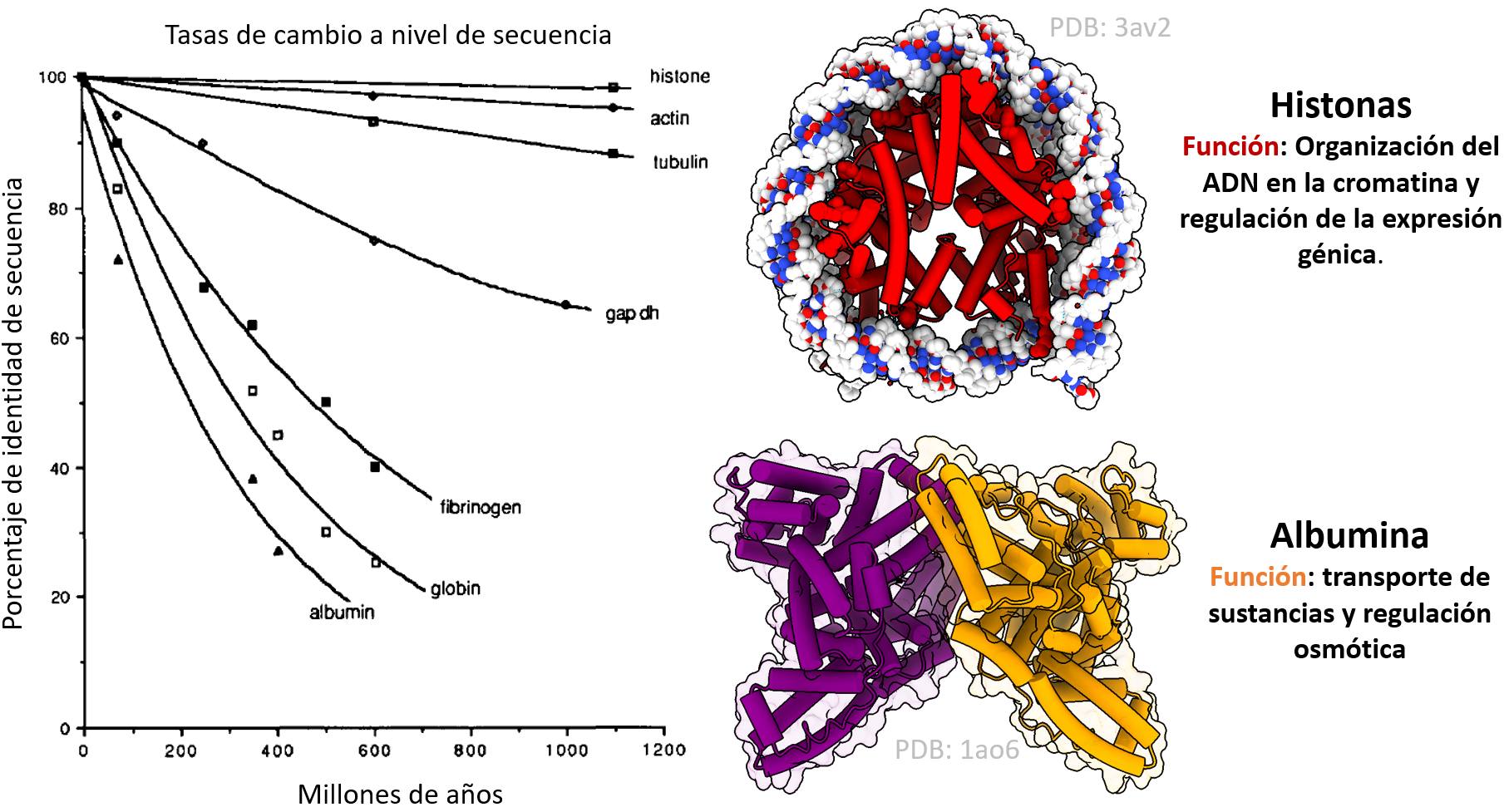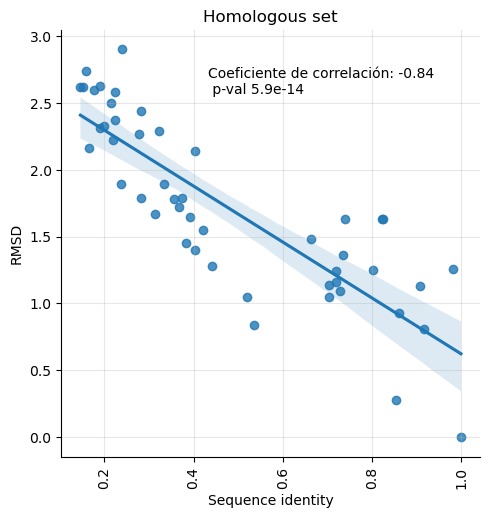Post 38: Protein evolution 🧬
Published:
Throughout evolution, some proteins have changed more than others at the sequence level. Proteins like histones are highly conserved regardless of the species. Others, like albumin, have changed a lot over evolution, but interestingly, their structures have been conserved. So, to generalize an explanation for this, we can say that the degree of divergence (at the sequence level) allowed for a family of proteins is inversely proportional to the importance of its function in the cell. The cell, in turn, exists in a historical context determined by its environment and interactions.

If you like numbers, here is the Pearson correlation between sequence identity and structural similarity (via RMDS) of 47 homologous proteins (class A beta-lactamases). How much can a sequence diverge? Well, who knows, in this case, there are homologs with 16% sequence identity, but in other superfamilies, homologs with as low as 8% identity have been recorded. But in general terms, they can diverge to the point of only sharing between 10-15% identity.

Refs:
